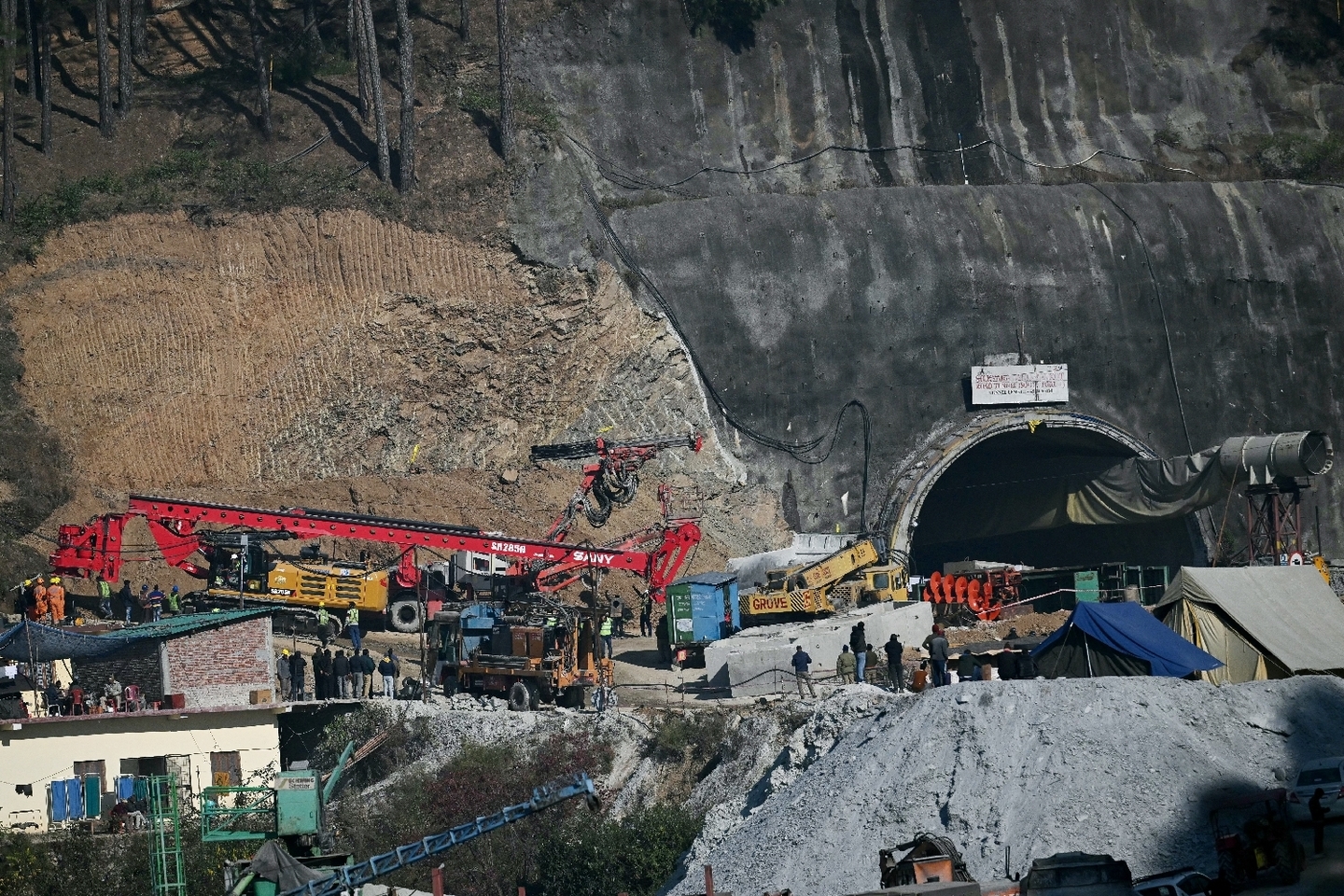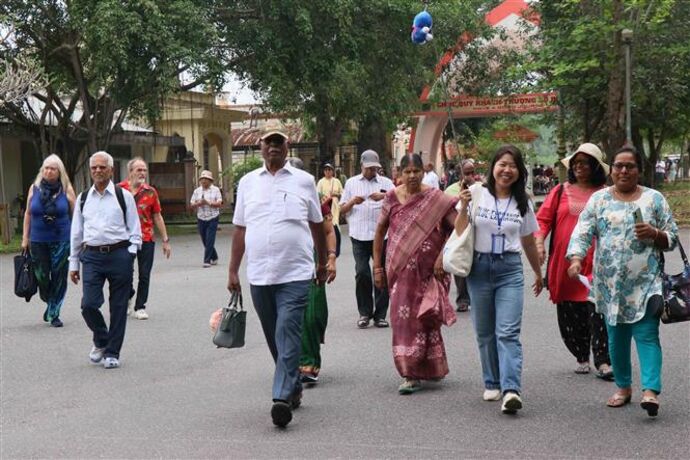LIndian rescue teams sent another machine on Saturday, this time to vertically drill a shaft in a collapsed tunnel where 41 workers had been trapped for two weeks, after encountering a new obstacle, just meters from the target at the Himalayan site.
Only nine meters remained to drill through the rubble to insert the final section of the massive 57-meter-long steel tube and allow workers to evacuate, but the drilling encountered a tangle of metal rods and construction vehicles blocking the way.
“Work is underway to bypass and clear the blockage,” Abhishek Ruhela, a senior local official, told AFP on Saturday.
Ambulances have been on standby and a field hospital has been prepared to accommodate the men, who have been trapped since a section of tunnel under construction in Silkyara, in the northern state of Uttarakhand, collapsed on November 12.
“Final phase”
Since the collapse, rescue efforts have been complicated and slowed by falling debris and the failure of drills crucial to rescuing workers.
“Work to reach the workers trapped inside is in the final stages,” continued Mr. Ruhela, “all possible options to reach them are being considered.”
Rescue teams were still trying to reach the people through the main entrance, and were now trying to open the road without training, rescue officials said.
According to AFP journalists present at the site, a heavy excavator climbed a specially built track to the top of a forested hill overlooking the tunnel, to begin vertical drilling of a well inside the tunnel.
Officials estimate the proposed well will be 89 meters deep, a complex digging operation above humans in an area that has experienced collapse.
Third option
Excavation has begun at the other end of the road tunnel, the third but longer lane, estimated to be around 480 metres.
The trapped workers have been surviving for two weeks on air, food, water and electricity delivered through a duct equipped with an endoscopic camera, so their families were able to see them for the first time on Tuesday since the tunnel collapsed.
Since Wednesday, authorities have said, on several occasions, that they expect a successful outcome in the coming hours, but in a press release, the government has warned that the situation is “likely to develop due to technical problems, difficult terrain (which is) Himalayas, and unexpected events”.
It is “like a battle, (…) a war to save the Indian children who have worked hard here in the mountains,” Syed Ata Hasnain, one of the leaders of the relief operation and a former army general.
“We must succeed at all costs to get these brave people out,” he told the press, adding that “all necessary means” would be used and last resort was essential.
The Silkyara Tunnel is part of Prime Minister Narendra Modi’s cherished Char Dham highway project, designed to improve connections with four of the country’s most important Hindu sites and also with China’s border regions.
In January, at least 200 people died in flash floods in Uttarakhand. Experts partly blamed the disaster on excessive development in the Himalayan state, much of which is prone to landslides.
11/25/2023 09:31:22 – Silkyara Tunnel (India) (AFP) – © 2023 AFP
Receive all the news directly in your email box!
Monday to Friday, receive every morning
most news:
politics, economics, society, sports…
dmp

“Twitter junkie. Hipster-friendly bacon expert. Beer ninja. Reader. Communicator. Explorer. Passionate alcohol geek.”







